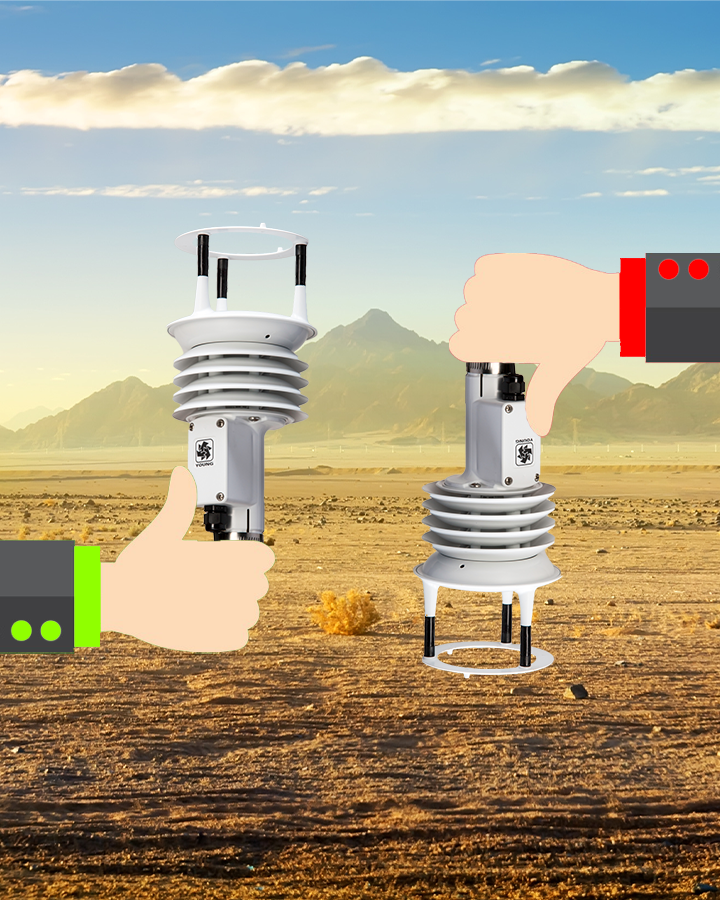All-in-one weather stations have revolutionized the way we monitor and analyze atmospheric conditions. By integrating multiple sensors into a single, compact unit, these devices can offer useful advantages, particularly in terms of cost, convenience, and data collection. However, they also come with certain limitations. This blog will delve into both the advantages and disadvantages of all-in-one weather stations and what application they are best suited for.
How All-in-One Weather Stations Work
All-in-one weather stations, like the ResponseONE™™, integrate multiple sensors into a single, compact unit to measure various atmospheric variables. Typically, these sensors include an ultrasonic anemometer to measure wind speed and direction, a temperature sensor, a relative humidity sensor, and a barometric pressure sensor. There are often options for add-ons as well, such as a compass or a precipitation gauge. These components and systems work together seamlessly to provide accurate and reliable weather data. The sensors measure atmospheric variables and transmit them as a single output string.
5 Advantages of All-in-One Weather Stations:
1. No Moving Parts
All-in-one weather stations often (not always) utilize an ultrasonic anemometer, which measures wind speed and direction without moving parts. That allows them to detect very subtle changes in wind speed and direction, which is ideal for locations with low-speed wind. The lack of moving parts also leaves them less prone to wear and tear over time.
2. Ease of Installation and Maintenance
All-in-one weather stations simplify the installation process significantly. With multiple sensors housed in a single unit, there is no need for extensive wiring and multiple mounting points. This not only reduces the time and effort required for setup but also minimizes the potential for installation errors.
3. Cost-Effectiveness
Combining multiple sensors into one device can be more cost-effective than purchasing and installing individual sensors. The consolidated design reduces the need for multiple supports and power supplies, which can lead to significant savings in both equipment and labor costs.
4. Compact and Space-Saving Design
The compact nature of all-in-one weather stations makes them ideal for locations with limited space. Their small footprint allows them to be installed in urban areas, on rooftops, or in other confined spaces without compromising on the quality or quantity of data collected.
5. Integrated Data Collection
All-in-one stations provide a unified data output, simplifying the data collection and analysis process. This integration ensures that data from different sensors is synchronized, which is crucial for accurate and reliable weather monitoring.
6 Disadvantages of All-in-One Weather Stations:
1. Lower Wind Range
Ultrasonic wind sensors are only able to achieve a maximum wind speed of up to 156 miles per hour, whereas a mechanical wind sensor, like the Wind Monitor, can accurately record wind speeds in excess of 200 miles per hour. That means all-in-one sensors may not be the best choice when trying to capture data in harsh conditions with extreme wind speeds.
2. Reduced Specifications
Performance may be impacted by compromises made in the integration of multiple sensors in close proximity. Or, in the use of less sensitive, lower cost sensor components. Essentially, you’re compromising quality for cost and convenience.
3. Limited Customization
All-in-one weather stations offer less flexibility in terms of customization. You’re not able to easily upgrade individual sensors or add new types of sensors to the existing unit. This can be a limitation for specialized applications that require specific types of data collection not supported by the integrated sensors.
4. Higher Replacement Costs
If one sensor in an all-in-one station fails, the entire unit might need to be replaced or sent to the manufacturer for repairs. This can be more costly and time-consuming compared to replacing or repairing individual parts in a traditional setup.
5. High Power Consumption
All-in-one weather stations require a reliable power source, which isn’t always an option in some applications. While solar power and battery backups are an option, they often don’t produce enough energy to power the station reliably and without interruption.
6. Environmental Limitations
Despite being designed for outdoor use, extreme weather conditions can still affect the durability and performance of these stations. Extremely heavy rain, snow, or ice accumulation can impact sensor accuracy or functionality. These environmental factors could also cause calibration drift over time, requiring regular recalibration.
Conclusion
There’s no doubt that there is a large array of applications that would be perfectly suited for the installation of an all-in-one weather station, though it does have its limitations. Ultimately, it comes down to what you’re wanting to measure and how you’re wanting to measure it. If you’re looking to measure several data points simultaneously, have a consistent power source, and aren’t in harsh conditions with exceptionally high wind speed, then an all-in-one weather station may be your best option.
Learn more about the ResponseONE™ weather station or contact us, and we’ll happily answer any questions you may have.


